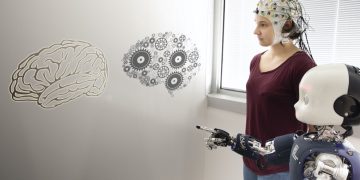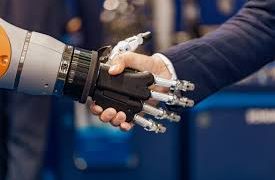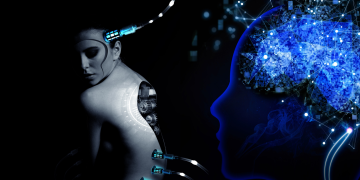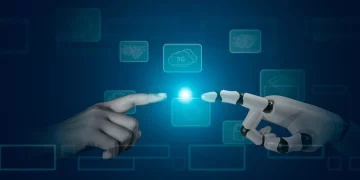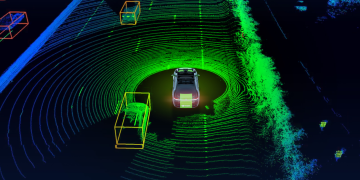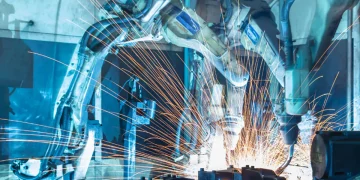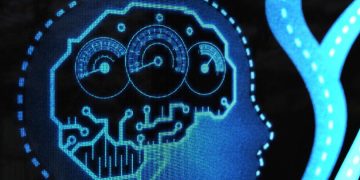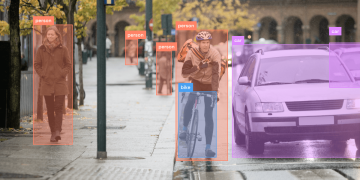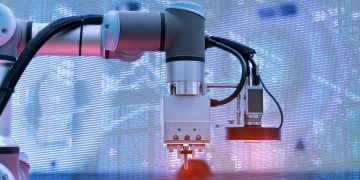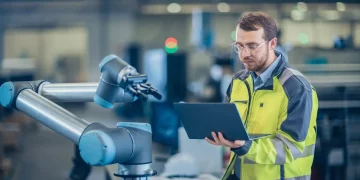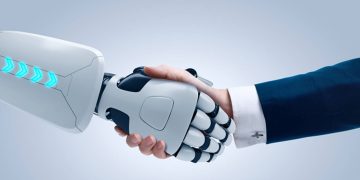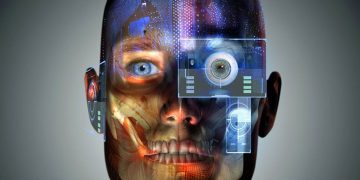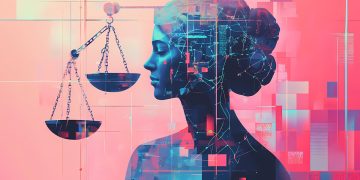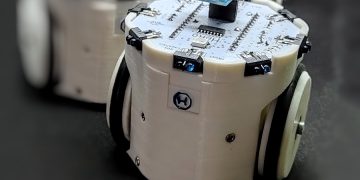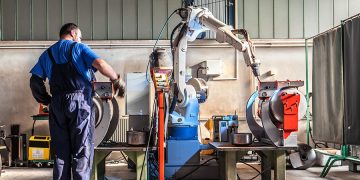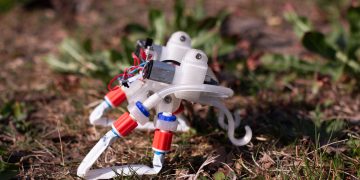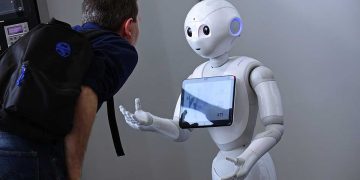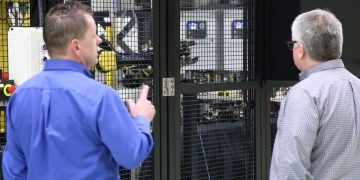Introduction
The rapid advancements in robotics and artificial intelligence (AI) are transforming industries worldwide. From manufacturing and healthcare to transportation and service sectors, robots are increasingly becoming part of the workforce, reshaping economies and human labor dynamics. However, the proliferation of robotic technology raises important ethical and societal issues that cannot be overlooked.
As robots evolve from simple tools to highly intelligent, autonomous systems capable of performing complex tasks, the ethical dilemmas surrounding their use become more profound. Key concerns include job displacement, privacy, bias in algorithms, autonomy of robots, and the broader impact on human interaction. These issues are not just theoretical; they are practical challenges that governments, companies, and individuals must address as robotic systems become an integral part of our daily lives.
This article aims to explore the ethical and societal implications of widespread robotics integration, focusing on the consequences for human workers, privacy rights, accountability, decision-making, and societal norms. By analyzing these challenges, we will also look at potential solutions and ethical frameworks that could guide the responsible development and deployment of robotic technologies.
1. The Role of Robotics in Society: An Overview
Before delving into the ethical implications, it is important to understand the role robots play in modern society. Robots, in their many forms, are already integrated into industries, services, and households. They are used in areas such as:
- Manufacturing and Automation: Robots handle repetitive tasks on assembly lines, improving efficiency and product consistency. Collaborative robots (cobots) work alongside human operators to improve productivity.
- Healthcare: Robots assist in surgeries, manage hospital logistics, and offer companionship to the elderly. AI-driven robots are also used in diagnostics and personalized medicine.
- Transportation: Autonomous vehicles and drones are set to revolutionize the way goods and people are transported.
- Customer Service: From chatbots to physical robots in retail stores, robots are changing how businesses interact with customers.
With such widespread adoption, robots are inevitably changing the fabric of society. As they become more autonomous and sophisticated, their influence grows, leading to new ethical challenges.
2. Job Displacement and Economic Inequality
One of the most pressing ethical concerns about robotics is its potential to displace human workers. As robots take on tasks traditionally performed by humans, especially in sectors like manufacturing, logistics, and even services, many fear the job losses that may follow. This fear is not unfounded—automation has already led to significant reductions in labor demand in certain industries.
Key Issues:
- Job Losses and Workforce Transition: Robots can perform tasks faster, more accurately, and often cheaper than humans. This could lead to widespread unemployment, particularly for low-skilled workers. For example, self-checkout systems in retail stores are replacing cashier jobs, while autonomous vehicles threaten to displace truck drivers and delivery personnel.
- Economic Inequality: The integration of robots may exacerbate existing economic inequalities. Companies that adopt robotic systems can increase productivity and profits, but this wealth may not be equally distributed. Large corporations may benefit from automation, while small businesses and workers in lower-income jobs suffer.
Potential Solutions:
- Reskilling and Upskilling: Governments and businesses can invest in training programs to help workers transition to new roles. By focusing on skills that are difficult for robots to replicate, such as creativity, empathy, and complex problem-solving, the workforce can evolve alongside technology.
- Universal Basic Income (UBI): Some experts argue that UBI could be a solution to the economic inequality caused by automation. With UBI, people would receive a fixed income regardless of their employment status, helping to mitigate the effects of widespread job displacement.
3. Privacy and Surveillance Concerns
As robots become increasingly autonomous and integrated into daily life, they collect vast amounts of data. Sensors, cameras, and other tracking technologies embedded in robots create new privacy risks. In industries like healthcare, where robots interact closely with patients, the potential for data breaches is significant.
Key Issues:
- Data Collection: Robots continuously gather personal data about their users, whether it’s a robot in a home assisting with daily tasks or a healthcare robot monitoring vital signs. This data, if mishandled, could lead to violations of privacy rights.
- Surveillance: The widespread use of robots in public spaces (e.g., autonomous vehicles, delivery robots) could result in increased surveillance of individuals, leading to concerns about the erosion of civil liberties.
Potential Solutions:
- Data Protection Regulations: Governments need to implement and enforce data protection laws that govern how robots collect, store, and share data. Transparency in data usage can help alleviate privacy concerns.
- Ethical AI Design: Developers of robotic systems must design these machines with privacy as a core consideration. This includes limiting data collection to only what is necessary for the robot’s function and ensuring data is anonymized whenever possible.
4. The Challenge of Algorithmic Bias
Another significant ethical challenge is the potential for algorithmic bias in robots and AI systems. Since many robotic systems rely on machine learning algorithms to make decisions, these algorithms can inadvertently perpetuate biases present in the training data. For example, robots used in hiring processes or law enforcement could adopt the prejudices and biases present in the historical data they are trained on.
Key Issues:
- Discrimination in Decision-Making: If robots are tasked with hiring or screening candidates, there is a risk they could discriminate against certain groups, such as women or people of color, based on biased historical data.
- Lack of Accountability: In some cases, robots may be making life-altering decisions (e.g., in criminal justice, healthcare, or finance). The question arises: Who is responsible when a robot’s decision has negative consequences, especially if the decision was influenced by biased data?
Potential Solutions:
- Bias Detection and Mitigation: Developers must actively audit and adjust algorithms to detect and mitigate bias. This includes using diverse data sets for training AI and ensuring that the robots’ decision-making processes are transparent and explainable.
- Ethical Oversight: To ensure fairness in robotics, external oversight bodies can be established to regulate how robots are used in decision-making, especially in sensitive areas like hiring or law enforcement.

5. Autonomy and Accountability
As robots become more autonomous, the question of accountability becomes increasingly important. Autonomous systems make decisions without human intervention, which complicates the question of responsibility when things go wrong. If an autonomous vehicle causes an accident or a healthcare robot misdiagnoses a patient, who is at fault?
Key Issues:
- Responsibility for Robot Actions: If a robot is involved in an accident or makes an error, it is difficult to determine who is responsible—the manufacturer, the software developer, or the robot itself?
- Moral and Legal Implications: As robots gain more decision-making power, ethical concerns arise regarding how these decisions are made. For example, if a robot has to choose between saving one life or another, what ethical framework does it follow? And who is accountable for that decision?
Potential Solutions:
- Clear Legal Frameworks: Governments must develop legal frameworks that define the responsibilities and liabilities of robot manufacturers, developers, and users.
- Ethical Programming: Robots can be programmed with ethical decision-making capabilities that align with human values. This would involve input from ethicists, legal experts, and the public to determine the principles that guide robots’ actions.
6. The Future of Robotics and Society
As robots continue to advance, their role in society will only expand. They have the potential to improve quality of life, revolutionize industries, and make our lives easier. However, it is essential that we carefully consider the ethical implications of their widespread use.
The future of robotics will depend on how societies address these ethical concerns. If we can strike a balance between innovation and responsible development, robots can become valuable tools that contribute to the well-being of society as a whole. However, without careful consideration of the ethical and societal impact, the benefits of robotics may be outweighed by the risks.
Conclusion
The integration of robots into everyday life brings tremendous potential but also significant ethical and societal challenges. As robots become more autonomous and capable, issues like job displacement, privacy, algorithmic bias, and accountability will require thoughtful solutions. To fully harness the benefits of robotics, it is essential to develop ethical frameworks, legal regulations, and technological safeguards that ensure robots are deployed responsibly and equitably.
The road ahead requires a multi-disciplinary approach, involving engineers, ethicists, lawmakers, and society at large to ensure that robotics benefits all while minimizing harm. As we navigate the future, it is crucial that we create a society where technology serves humanity, rather than displaces or harms it.


